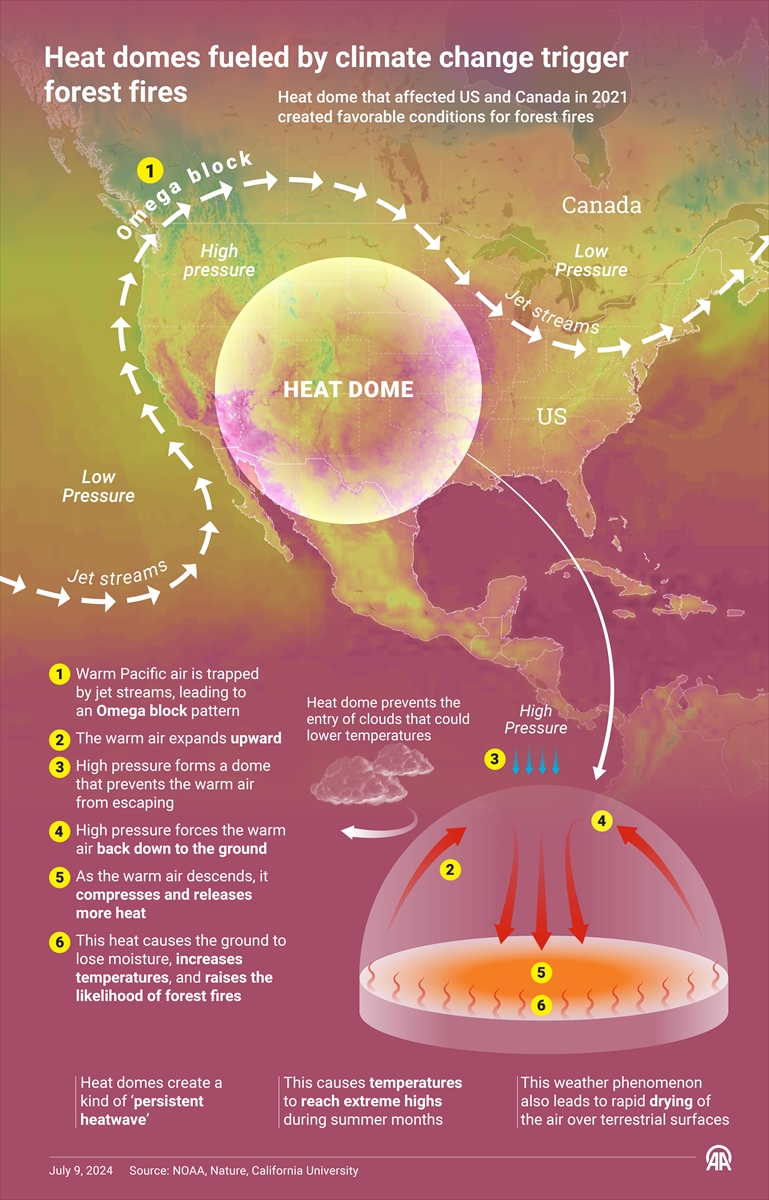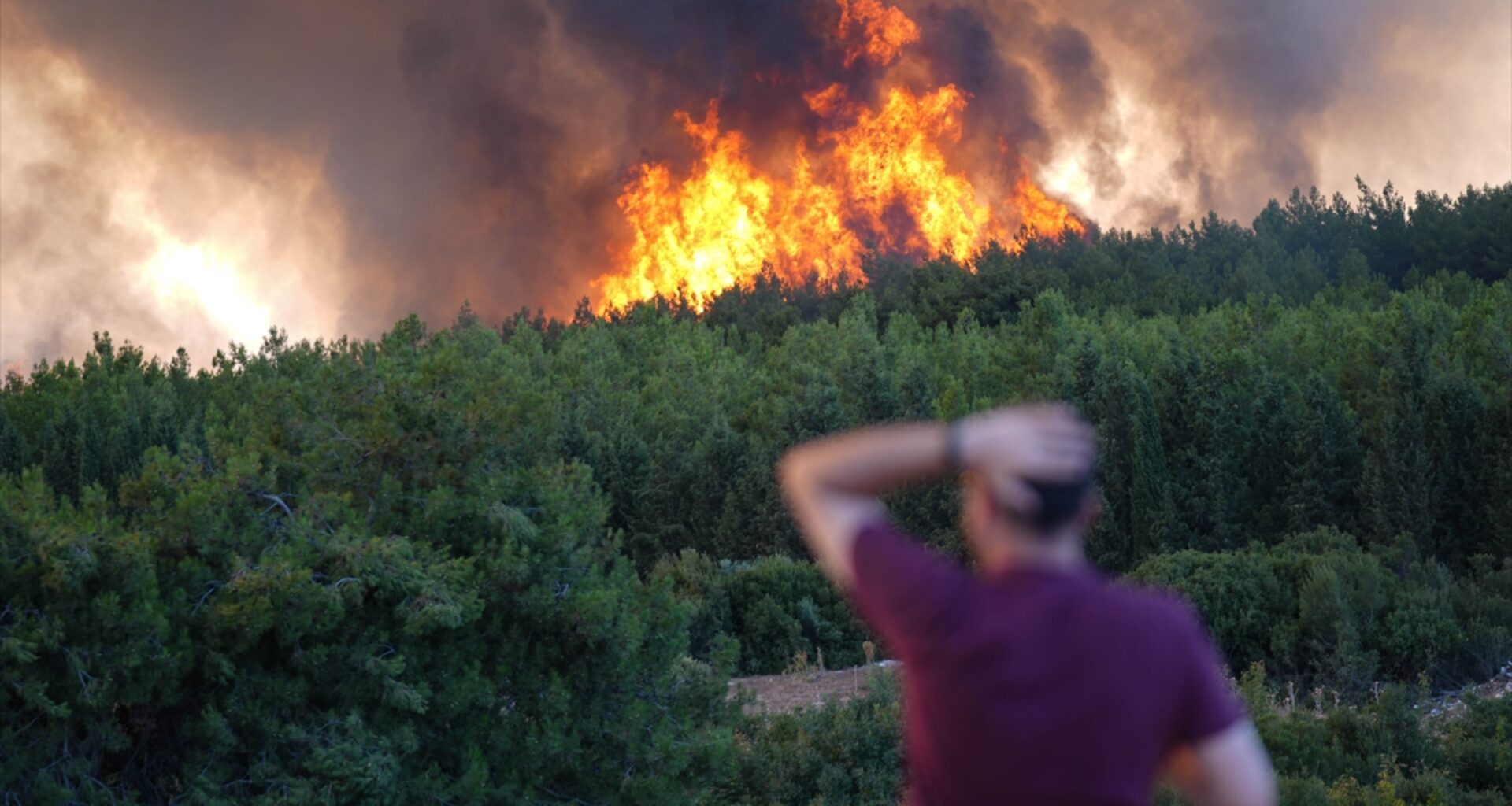NEW YORK – Bünyamin Sürmeli – “Heat domes” formed under the influence of global warming facilitate the spread of forest fires, said Prof. John Abatzoglou, a climate scientist and faculty member at the University of California, Department of Complex Systems Management.
As the Midwestern and Northeastern U.S. states grapple with heat waves, NASA emphasized that the main reason for the situation is the weather phenomenon known as a “heat dome.
Formation and effects of heat domes
Heat domes are usually the result of an area of high pressure trapping heat over an area for an extended period of time. This is caused by the slowing and collapse of air currents coming from subtropical regions under the influence of jet winds. It is said that the warming of the Arctic region due to global warming has changed the nature of jet winds and played a role in the formation of heat domes.

According to the Copernicus Climate Change Service, the extreme heat and heat domes that affected Europe last year led to temperatures exceeding 45 degrees Celsius in Greece, Spain and southern Italy, and the region was hit by prolonged heat waves. This led to uncontrollable forest fires.
Wildfires and the role of heat domes
The wildfires that occurred in Canada in 2021 were linked to heat domes that are active in North America, according to an article published in the scientific journal Nature. Researchers said that the presence of heat domes facilitates the spread of fires and causes the area affected by fires to expand.
The study recalled that extreme heat has been effective in the Canadian province of British Columbia and the US states of Washington and Oregon, with thermometers reaching 49.6 degrees Celsius in some areas, and the resulting heat dome leads to more heat and insufficient humidity, creating favorable conditions for forest fires.
Prof. Dr. Abatzoglou said in a statement that climate change is increasing the frequency and severity of such hot weather events, accelerating the drying of the land and thus increasing the likelihood of wildfires. He also stressed the growing importance of preventing human errors that can lead to fires, particularly operating equipment near dry vegetation, not disposing of cigarette butts properly and not lighting recreational fires.
Challenges and solutions ahead
As the effects of climate change intensify, scientists and experts predict that the frequency and severity of extreme weather events, such as heat waves, will increase. This could pose new challenges in the fight against forest fires. It is therefore emphasized that measures should be taken against natural and man-made factors to prevent the outbreak of fires.
Stressing the importance of minimizing human impact on the natural environment, Abatzoglou called for global climate action to reduce the effects of rising temperatures and heat domes. In this context, he emphasized the importance of measures such as sustainable energy policies and the reduction of greenhouse gas emissions.
In conclusion, climate change and the impact of heat domes on forest fires is a global problem that needs to be addressed with a multidisciplinary approach. The implementation of scientific research and appropriate policies is crucial to prevent and mitigate the effects of such natural disasters.
Photo and Graphic : AA



 UN
UN 


